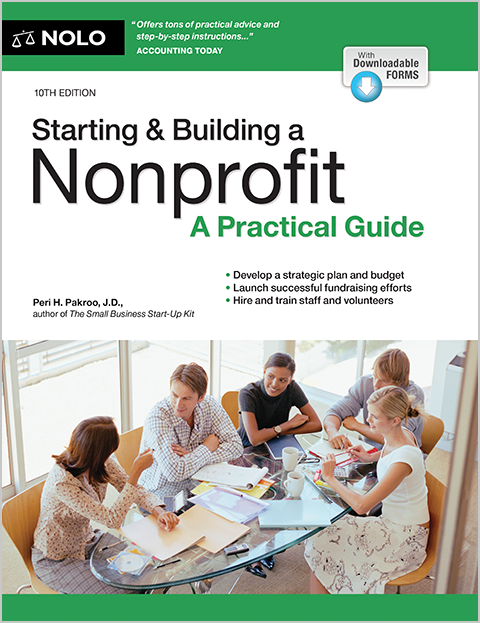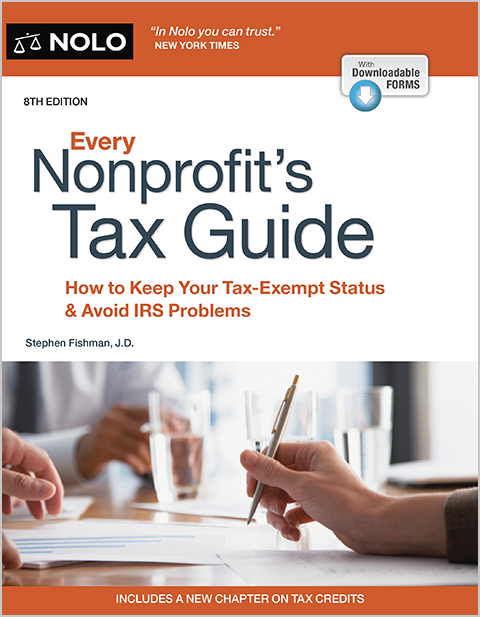If your nonprofit does not have a charitable mission and exists to serve its members, consider forming a mutual benefit corporation.
California recognizes three types of nonprofit corporations: religious, public benefit, and mutual benefit corporations. These types differ in terms of their missions, activities, and fundraising regulations. But they share an essential feature—to further a purpose other than making a profit, and all of them can apply for tax-exemption to avoid federal and state corporate tax.
A mutual benefit corporation stands apart from the other types of nonprofits in that its mission is to serve its members and not the public. Common examples of mutual benefit corporations are homeowners' associations, chambers of commerce, fraternities, and professional associations.
Similarities Among Nonprofit Corporations
The similarities among the three types of nonprofits are tax-exemption, formation, management, and use of profits. All nonprofits are eligible for tax exemption, meaning the organization can avoid corporate tax, sales tax, franchise tax, and other state taxes (as discussed below). The process of forming and managing each type of nonprofit is also similar. Read on for more information about formation, and review our other articles for more information on nonprofit governance.
Despite the name, nonprofits can make a profit, but unlike for-profit corporations, the organization must use the revenue to further the mission of the organization. Organizers can use profits to pay for operating costs and reasonable salaries, and can save money for future endeavors. While for-profit corporations distribute profits to their owners, in the form of dividends, the law prohibits nonprofits from doing so. To read more about restrictions on the use of profits, which apply to all nonprofit types, see our article on Private Inurement.
How Mutual Benefit Corporations Are Different
Mutual benefit corporations are different from other nonprofit types in terms of their missions, the ease with which they can attract contributions, and the rules for distributing assets following dissolution.
- Mission: Who is benefiting from this organization? Mutual benefit corporations are organized for the benefit of their members, but public benefit corporations exist to help the general public. For example, a medical mutual benefit corporation might be a doctors' professional association that serves its doctor-members by providing networking events and continuing education. But a medical public benefit corporation might be a clinic that offers free medical care to low-income individuals.
- Resources: How easy is it to attract contributions? In general, public benefit organizations will have an easier time attracting contributions than their mutual benefit cousin. That's because donations to mutual benefit corporations (including grants and discounts on items like software) are typically not tax-deductible for the donor, whereas donors to public benefit corporations are incentivized to give in order to enjoy these breaks. Read on to learn more about fundraising considerations for mutual benefit corporations.
- Dissolution: What happens to the leftovers? After closing down a mutual benefit corporation and settling the organization's debts, the organizers can distribute the remaining assets to its members. Other nonprofits do not have this option. After dissolving a public benefit or religious nonprofit, the owners must use the organization's assets for a tax-deductible purpose (usually accomplished by giving the assets to another charity).
Fundraising Considerations for Mutual Benefit Corporations
Mutual benefit corporations operate under different fundraising regulations than public benefit and religious nonprofits. In general, mutual benefit corporation fundraisers serve only the organization's members and not the public. As a result, organizers can avoid the fundraising regulations that charities are subject to, which ensure that public charities are using donations for the public good and not to benefit their members. While mutual benefit corporations have more flexibility in fundraising and the use of funds, donations to the organization are not tax-deductible.
If your organization solicits donations, check with the Attorney General to determine whether you must register as a charity (read more about the fundraising registration process here). If your fundraisers are for the benefit of your members only and you communicate this to the participants, you might avoid the registration requirement., Most importantly, when you solicit donations (such as appeals on your website and in newsletters and emails), you must inform potential donors that their contributions are not tax-deductible.
How to Form a Mutual Benefit Corporation
To form a mutual benefit corporation, follow the same steps as you would if you were forming a public benefit or religious nonprofit, but be sure to use the correct articles of incorporation form (ARTS-MU). The steps include:
- Form a board of directors.
- Choose a name for your organization.
- File articles of incorporation (Form ARTS-MU) with the Secretary of State and pay a filing fee.
- Create bylaws (your organization's internal rules for management, which you can read more about in our article, Nonprofit Bylaws).
- Apply for an Employer Identification Number (EIN).
- Register with tax agencies.
- Apply for licenses and permits.
To learn more about the process for forming a California nonprofit, check out our article, How to Form a California Nonprofit Corporation.
Tax Exemptions
Mutual benefit corporations can apply for tax exemptions with federal and state tax agencies. An attorney or an accountant can help determine whether your organization qualifies for federal tax-exemption and prepare your application, Form 1024, Application for Recognition of Exemption. Once you have your federal tax exemption, you can apply for state tax exemptions to avoid corporate, property, sales, and other state taxes. Contact the California Franchise Tax Board for more information. For additional guidance on nonprofit taxation, check out our book, Every Nonprofit's Tax Guide.



